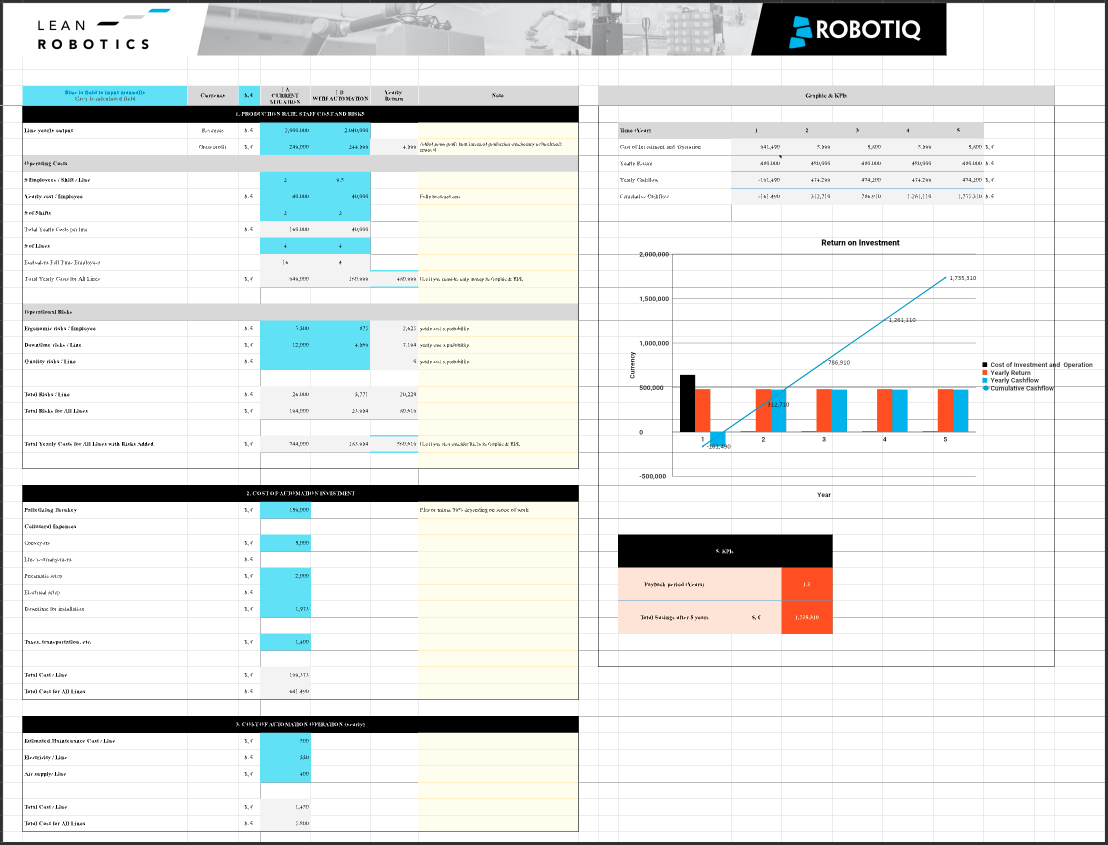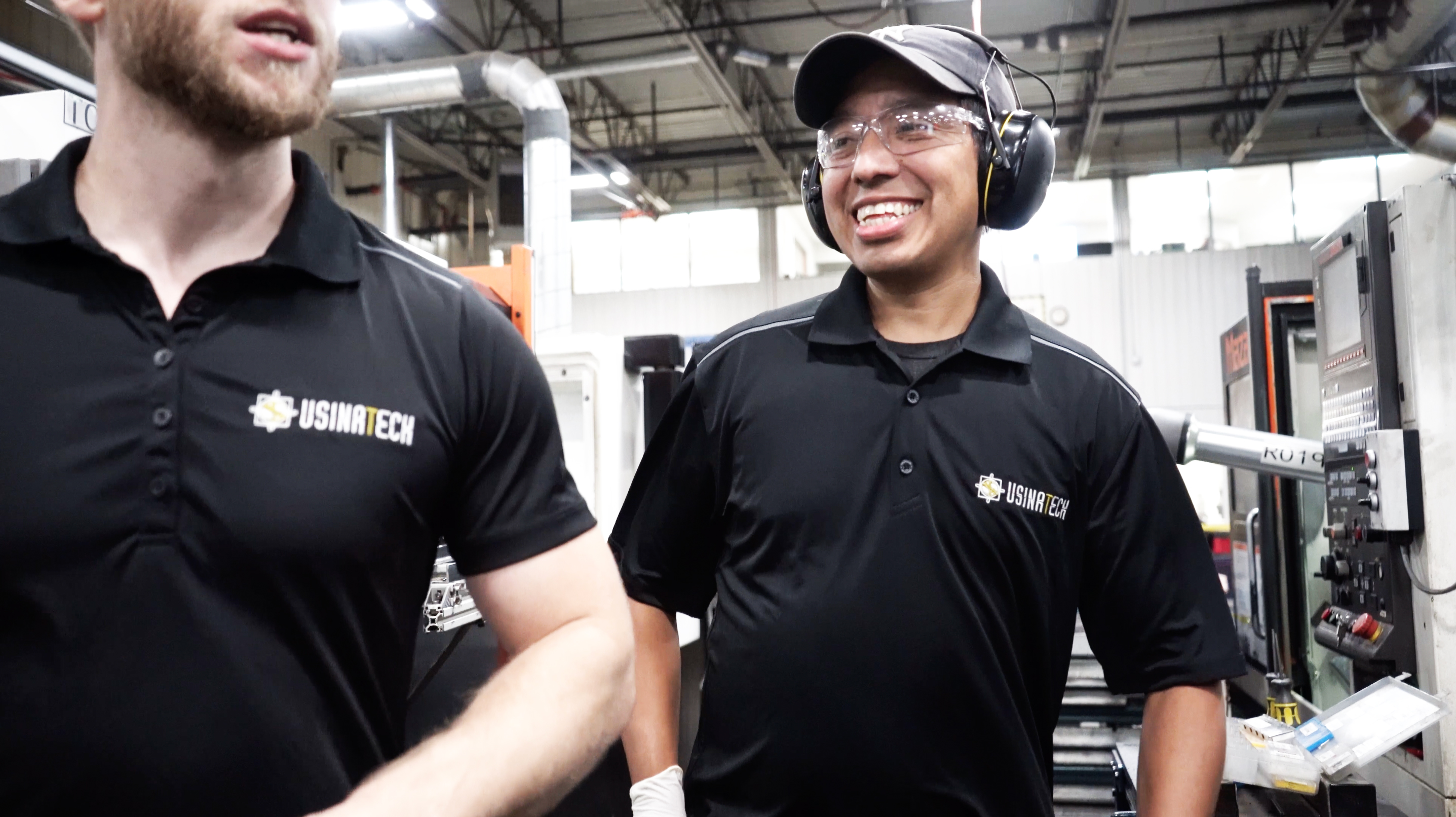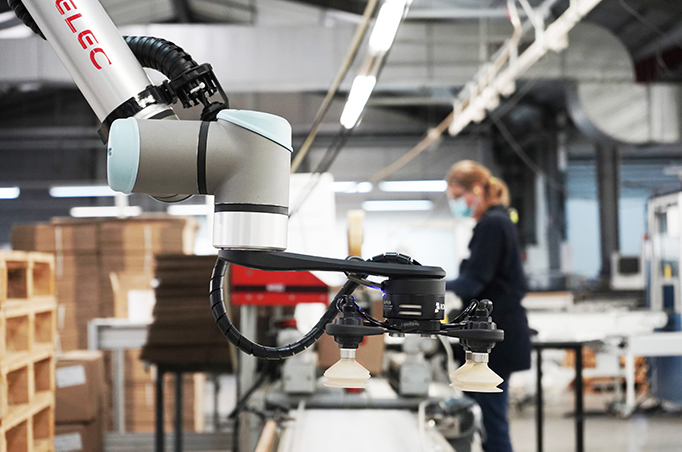Mobile Collaborative Robots: The Next Big Thing

Posted on Dec 04, 2018 in Collaborative Robots
6 min read time
What will be the next big thing in collaborative robotics? Now that cobots are a mature technology, it looks like mobile cobots will be the next wave.
It's fair to say that collaborative robots have "arrived." Over the last 10 years, cobots have grown in popularity — as we discussed this time last year. They are almost as ubiquitous as industrial robots (though sales figures are still much lower). Businesses of all different sizes are using cobots to improve their productivity.
But, progress never stops. The "next big thing" is always around the corner.
What will be the next big thing in collaborative robots?
A good contender is mobile collaborative robotics.
Recently, market researcher Dr Khasha Ghaffarzadeh predicted that the next wave of robots will be mobile, collaborative and/or more intelligent.
A mobile chewing gum station at automatica 2018
What is a mobile collaborative robot?
The most basic mobile collaborative robot consists of the following, in my opinion:
- An autonomous mobile robot (AMR) with safety features which allow it to operate around humans.
- A collaborative robot manipulator (cobot).
The cobot is mounted onto the AMR, allowing it to travel around the workfloor autonomously.
It's worth nothing that some people think of AMRs alone as "mobile collaborative robots." I would disagree with this definition because AMRs tend to have safety features by default. There's no point in adding the word "collaborative" just because it's a buzzword. In my opinion, the collaborative element is provided by the collaborative manipulator.
What's new about mobile cobots?
To be honest, nothing. Mobile cobots are nothing new at all.
Cobots have been around for at least a decade and AMRs with safety features have been around for even longer. Companies have even been combining the two technologies for some time now, as I'll show at the end of this article.
The reason I say that mobile cobots are "the next thing" is that they are still rare in industrial contexts. While it is increasingly common to see cobots in a manufacturing business, it's still unlikely that you'll see a mobile cobot in the same place.
But, that looks likely to change over the coming years. Mobile robots have been in the spotlight recently thanks to their increasing use in the logistics industry and in autonomous vehicles. It seems only natural that mobile cobots will be adopted, now that the AMR and cobot technologies are reaching maturity.
The benefits and challenges of mobile cobots
As with any technology, there are benefits to adopting mobile cobots as well as some inherent challenges. These will affect whether or not businesses will choose to adopt them into their workflow.
Benefits of mobile cobots
There are some clear benefits to adding mobility to your collaborative robot. You can probably think of some specific benefits for your own applications.
Some of the general benefits are:
- Can move around the workspace alone — This is the most obvious benefit. We have seen various teams who drag their cobot between workstations to maximize its uptime. Adding a mobile base means that cobot can do this autonomously.
- Reduces hands-on time required for changeovers — This added autonomy means that members of your team don't waste time changing over the robot between tasks. They can focus on more value added tasks.
- Reduces downtime between tasks — One of the major disadvantages of manually moving the cobot is the downtime that it causes. The cobot can sit idle for some time until someone is ready to move it. A mobile base means that this downtime does not occur.
- Improved performance for picking tasks — A popular application for mobile cobots is picking and material handling. The robot moves between locations and picks items, e.g. from shelves. This can remove 50% of the time spent on order selection in a warehouse, according to a RIA presentation.
- Better use of space — Cobots use much less space than traditional industrial robots because they don't need safety fencing. However, they still require a fixed workspace. Mobile cobots, on the other hand, can be stored in one location and move to other locations as needed.
Challenges with mobile cobots
Of course, with every new technology there are also added challenges. This is certainly the case with mobile cobots.
Some general challenges are:
- Need to recharge often — One problem with mobile cobots is that they rely on batteries to power both the AMR and the cobot. The batteries can quickly run out if the robot is not connected to a power source. FANUC addressed this issue in this video by getting the cobot to plug in the AMR on its arrival at every assembly station.
- Can reduce speed of tasks — Cobots tend to move slower than traditional industrial robots and AMRs also move quite slowly. These are both due to to safety limits rather than physical limits of the system, but they can affect the cycle time compared to fully manual operations. For cobots with few changeovers, it may be quicker and more economical to move the robot between tasks manually.
- Increases complexity of safety — As there are more moving parts of the system, there are more safety issues to consider. For example, the force limits of a cobot are defined for when the robot base is static. These will change if the cobot moves while the base is also moving. The extra complexity will have to be included in the risk assessment.
- There are alternative solutions — Some of the benefits of mobile cobots can be achieved via alternative solutions. For example, you could add an extra cobot to perform a second task, rather than moving one robot between tasks with an AMR. Similarly, the downtime caused by the robot sitting idle can be reduced by using Insights notifications to tell you when the robot has finished its current task.
- Costly compared to alternatives — Autonomous Mobile Robots can also be quite expensive, easily $70k-$100k each. For some users, it might make sense to choose one of the alternative solutions which are also more cost effective. For example, you could by 2 or 3 cobots for the cost of one AMR.
When will mobile cobots come to a workspace near me?
It seems likely that we will see more mobile collaborative robots over the coming years. Both AMR and cobot technologies are now sufficiently mature. All it needs is for businesses to start considering mobile cobots as a potential solution to their current problems.
Taking into account the benefits and challenges of mobile cobots, I would say that fewer businesses will adopt them than will adopt cobots alone. But, if mobile cobots sound like a good solution to you, here are some of the platforms that we have already seen:
- Yaskawa and Otto joined forces — We saw this mobile cobot back at Automatica 2016.
- KUKA Omnirob — This is an example of the collaborative version of KUKA's well established omniMove technology.
- UR+Adept by Castec — This platform from Castec incorporates a UR robot and an Adept mobile base.
When will mobile collaborative robots come to a workspace near you? Pretty soon I'd guess.
Which of your applications could you improve with a mobile cobot? Tell us in the comments below or join the discussion on LinkedIn, Twitter, Facebook or the DoF professional robotics community.






Leave a comment